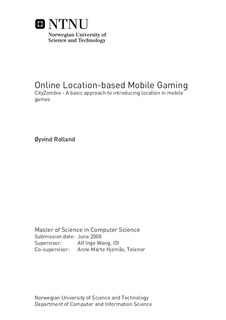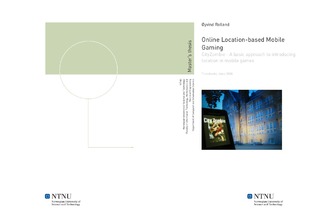| dc.description.abstract | Mobile phone gaming has seen an enormous growth over the last decade and many countries now have more cell phone subscriptions than they have people. Combined with the ever increasing interest in games, the mobile gaming market still hasn't reached it's full potential. Newer and more powerful phones with interesting features hit the market every day. Many of those features are directed at locating position, and that opens up for the prospect of location-based gaming. This branch of gaming is still in the starting phase, and public awareness is relatively low. Meanwhile, developers and operators explore the opportunities that are yet to be tested. In this project, we have developed a game to test different aspects related to infrastructure, network and playability in location-based mobile gaming. From the testing of GSM and UMTS networks, results show that basic network properties such as CellID can be utilized to make challenging and social games. Furthermore, the tests hinted at UMTS as the best suited network to perform location-based gaming, as the smaller and less overlapping zone structure, response times and bandwidth facilitates a multiplayer game better than the GSM network. This is not a global truth, though, since EDGE increases the GSM response times and bandwidth to an acceptable level. As long as a suitable mapping of game zones and real-world cells can be made, GSM is still a candidate in many environments. Developers face new challenges with location-based gaming, as testing no longer can be confined to the development environment. Extensive field testing is vital to both flesh out techincal issues as well as gameplay-related issues. Outdoor distances makes testing take longer time, and communication between test team and developers is harder than in a studio. Finally, playtesting shows that most people are open to the idea of physical movement as input when playing in a virtual reality. When incorporating social elements and multiplayer options in a dynamic setting, location-based games can be seen as a replacement for a friendly football game or similar outdoor activities. When such an approach can be made, while keeping communication and team-feeling among players high, the full potential of location-based gaming migh be unlocked. | nb_NO |

